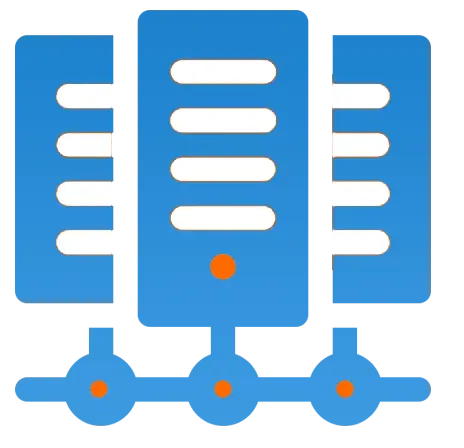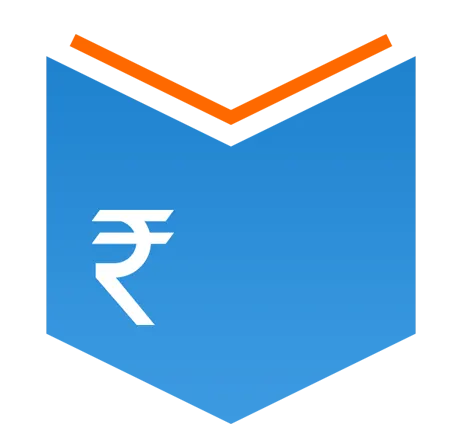Get 69% Off on Cloud Hosting : Claim Your Offer Now!
- Products
-
Compute
Compute
- Predefined TemplatesChoose from a library of predefined templates to deploy virtual machines!
- Custom TemplatesUse Cyfuture Cloud custom templates to create new VMs in a cloud computing environment
- Spot Machines/ Machines on Flex ModelAffordable compute instances suitable for batch jobs and fault-tolerant workloads.
- Shielded ComputingProtect enterprise workloads from threats like remote attacks, privilege escalation, and malicious insiders with Shielded Computing
- GPU CloudGet access to graphics processing units (GPUs) through a Cyfuture cloud infrastructure
- vAppsHost applications and services, or create a test or development environment with Cyfuture Cloud vApps, powered by VMware
- Serverless ComputingNo need to worry about provisioning or managing servers, switch to Serverless Computing with Cyfuture Cloud
- HPCHigh-Performance Computing
- BaremetalBare metal refers to a type of cloud computing service that provides access to dedicated physical servers, rather than virtualized servers.
-
Storage
Storage
- Standard StorageGet access to low-latency access to data and a high level of reliability with Cyfuture Cloud standard storage service
- Nearline StorageStore data at a lower cost without compromising on the level of availability with Nearline
- Coldline StorageStore infrequently used data at low cost with Cyfuture Cloud coldline storage
- Archival StorageStore data in a long-term, durable manner with Cyfuture Cloud archival storage service
-
Database
Database
- MS SQLStore and manage a wide range of applications with Cyfuture Cloud MS SQL
- MariaDBStore and manage data with the cloud with enhanced speed and reliability
- MongoDBNow, store and manage large amounts of data in the cloud with Cyfuture Cloud MongoDB
- Redis CacheStore and retrieve large amounts of data quickly with Cyfuture Cloud Redis Cache
-
Automation
Automation
-
Containers
Containers
- KubernetesNow deploy and manage your applications more efficiently and effectively with the Cyfuture Cloud Kubernetes service
- MicroservicesDesign a cloud application that is multilingual, easily scalable, easy to maintain and deploy, highly available, and minimizes failures using Cyfuture Cloud microservices
-
Operations
Operations
- Real-time Monitoring & Logging ServicesMonitor & track the performance of your applications with real-time monitoring & logging services offered by Cyfuture Cloud
- Infra-maintenance & OptimizationEnsure that your organization is functioning properly with Cyfuture Cloud
- Application Performance ServiceOptimize the performance of your applications over cloud with us
- Database Performance ServiceOptimize the performance of databases over the cloud with us
- Security Managed ServiceProtect your systems and data from security threats with us!
- Back-up As a ServiceStore and manage backups of data in the cloud with Cyfuture Cloud Backup as a Service
- Data Back-up & RestoreStore and manage backups of your data in the cloud with us
- Remote Back-upStore and manage backups in the cloud with remote backup service with Cyfuture Cloud
- Disaster RecoveryStore copies of your data and applications in the cloud and use them to recover in the event of a disaster with the disaster recovery service offered by us
-
Networking
Networking
- Load BalancerEnsure that applications deployed across cloud environments are available, secure, and responsive with an easy, modern approach to load balancing
- Virtual Data CenterNo need to build and maintain a physical data center. It’s time for the virtual data center
- Private LinkPrivate Link is a service offered by Cyfuture Cloud that enables businesses to securely connect their on-premises network to Cyfuture Cloud's network over a private network connection
- Private CircuitGain a high level of security and privacy with private circuits
- VPN GatewaySecurely connect your on-premises network to our network over the internet with VPN Gateway
- CDNGet high availability and performance by distributing the service spatially relative to end users with CDN
-
Media
-
Analytics
Analytics
-
Security
Security
-
Network Firewall
- DNATTranslate destination IP address when connecting from public IP address to a private IP address with DNAT
- SNATWith SNAT, allow traffic from a private network to go to the internet
- WAFProtect your applications from any malicious activity with Cyfuture Cloud WAF service
- DDoSSave your organization from DoSS attacks with Cyfuture Cloud
- IPS/ IDSMonitor and prevent your cloud-based network & infrastructure with IPS/ IDS service by Cyfuture Cloud
- Anti-Virus & Anti-MalwareProtect your cloud-based network & infrastructure with antivirus and antimalware services by Cyfuture Cloud
- Threat EmulationTest the effectiveness of cloud security system with Cyfuture Cloud threat emulation service
- SIEM & SOARMonitor and respond to security threats with SIEM & SOAR services offered by Cyfuture Cloud
- Multi-Factor AuthenticationNow provide an additional layer of security to prevent unauthorized users from accessing your cloud account, even when the password has been stolen!
- SSLSecure data transmission over web browsers with SSL service offered by Cyfuture Cloud
- Threat Detection/ Zero DayThreat detection and zero-day protection are security features that are offered by Cyfuture Cloud as a part of its security offerings
- Vulnerability AssesmentIdentify and analyze vulnerabilities and weaknesses with the Vulnerability Assessment service offered by Cyfuture Cloud
- Penetration TestingIdentify and analyze vulnerabilities and weaknesses with the Penetration Testing service offered by Cyfuture Cloud
- Cloud Key ManagementSecure storage, management, and use of cryptographic keys within a cloud environment with Cloud Key Management
- Cloud Security Posture Management serviceWith Cyfuture Cloud, you get continuous cloud security improvements and adaptations to reduce the chances of successful attacks
- Managed HSMProtect sensitive data and meet regulatory requirements for secure data storage and processing.
- Zero TrustEnsure complete security of network connections and devices over the cloud with Zero Trust Service
- IdentityManage and control access to their network resources and applications for your business with Identity service by Cyfuture Cloud
-
-
Compute
- Solutions
-
Solutions
Solutions
-
 Cloud
Hosting
Cloud
Hosting
-
 VPS
Hosting
VPS
Hosting
-
GPU Cloud
-
 Dedicated
Server
Dedicated
Server
-
 Server
Colocation
Server
Colocation
-
 Backup as a Service
Backup as a Service
-
 CDN
Network
CDN
Network
-
 Window
Cloud Hosting
Window
Cloud Hosting
-
 Linux
Cloud Hosting
Linux
Cloud Hosting
-
Managed Cloud Service
-
Storage as a Service
-
 VMware
Public Cloud
VMware
Public Cloud
-
 Multi-Cloud
Hosting
Multi-Cloud
Hosting
-
 Cloud
Server Hosting
Cloud
Server Hosting
-
 Bare
Metal Server
Bare
Metal Server
-
 Virtual
Machine
Virtual
Machine
-
 Magento
Hosting
Magento
Hosting
-
Remote Backup
-
 DevOps
DevOps
-
 Kubernetes
Kubernetes
-
 Cloud
Storage
Cloud
Storage
-
NVMe Hosting
-
 DR
as s Service
DR
as s Service
-
-
Solutions
- Marketplace
- Pricing
- Resources
- Resources
-
By Product
Use Cases
-
By Industry
- Company
-
Company
Company
-
Company
Increase Your Cloud Security With Isolation Zones
Table of Contents
Securing your applications is crucial for a successful business, whether you’re using affordable cloud hosting, local servers, or a mix of both. One effective way to enhance security is by creating isolation zones within your infrastructure. These zones act like protective barriers, shielding your applications and data from outside threats.
Research has shown that organizations that implement isolation zones experience fewer and less severe security breaches. For example, a recent cybersecurity study found that companies with well-defined isolation zones reported up to 60% fewer security incidents compared to those without.
By dividing your infrastructure into these zones, any security breach or attack is contained within that specific area. This containment minimizes the impact and reduces the risk of widespread damage to your applications and business operations. In essence, isolation zones turn potential major security issues into smaller, manageable problems, ensuring your applications remain secure and operational amidst today’s cybersecurity challenges.
Understanding Security Zones
While there is a wide range of approaches to planning your security zones in managed cloud hosting in India, one normal model is to utilize three zones. The three zones give partition between the public web (public zone) and your inside administrations and information stores (confidential zone), embedding a confinement layer (DMZ) between the two. Figure 1 shows how they cooperate.
Clients associate with your application from the public web by getting to administrations in the public zone. The public zone presents and associates with the web. Administrations in this zone are presented straightforwardly to the web and available straightforwardly from the web. The administrations run on servers are secured through different firewalls yet in any case get traffic straightforwardly from clients out on the outer web.
These public-confronting administrations accomplish as little work as could be expected, however, one of their more significant undertakings is to manage and review the information got from the outer web to ensure it’s legitimate and suitable. These administrations ought to channel refusal of administration (DoS) assaults, agitator penetration, and invalid end-client input.
What are the Three Security Zones of Control:
| Security Zone | Description |
|---|---|
| Public Zone | This zone is accessible to everyone, typically the internet-facing portion. It includes resources intended for public access, such as websites, marketing materials, and some external-facing services. Security measures in this zone often focus on protecting against common threats and unauthorized access. |
| DMZ (Demilitarized Zone) | The DMZ acts as an intermediary zone between the internal trusted network and the external untrusted network (like the internet). It hosts services that need partial exposure to the outside world, such as email servers or web servers. Security measures in this zone are more stringent than the public zone but less restrictive than the internal network. |
| Internal Zone | This zone contains the most sensitive resources and data, including databases, internal applications, and critical systems. Access to this zone is strictly controlled and limited to authorized personnel only. Security measures here are the most robust, focusing on protecting against insider threats and sophisticated external attacks. |
Control Information
The majority of the application exists in the confidential zone. This zone is where the application information is put away as well as the administrations that entrance and control the information, and it’s where the majority of the back finish of your application exists. However many of the applications as could expect ought to be in this zone. This zone is the uttermost away from the public web. There are no open confronting servers in this zone. The zone is as segregated from the public web however much as could be expected.
DMZ Zone
To keep the hidden zone secure, no one can get to the administrations in this zone straightforwardly. Indeed, even administrations in the application’s public zone can’t get to administrations in the confidential zone. All things being equal, administrations in the public zone access the confidential zone through a third zone, the DMZ. The DMZ, or neutral territory, is a middle person zone that gives a degree of segregation and extra security between the general population and confidential zones. Further safeguarding the main part of the application contained in the confidential zone.
The reason for this three-zone model is to keep the “wild crude web” away from the delicate pieces of your application. Two segregated zones, the public zone and DMZ give a layer of insurance between the public web and the majority of the back-end administrations.
The zones disengage from one another by utilizing independent, private, organizing portions. These have a particular organization and application-level security firewalls interfacing them. While traffic for the most part streams unreservedly inside the public zone toward the front. It limits to the confidential zone toward the back. So that main administrations that intend to converse with each other can impart. No pointless correspondence between back-end administrations permits. These limitations intend to restrict the impact range or effect region of an assault. On the off chance that a piece of your framework compromises. These insurances will make it hard for the assailant to dig further into your application. Your delicate information is put away somewhere down in the guts of the confidential zone. It isolates from any troublemakers by many layers of assurance.
Standard Cloud Security Controls
In the cloud, Amazon Web Services (AWS), Microsoft Azure, and Google Cloud all deal with standard security components that assist in the development and the executives of these zones. For instance, AWS gives explicit devices and administrations that help with making these security zones and give the separation expected between them:
Amazon VPCs
VPCs, or virtual confidential mists, give segregated IP addresses goes and directing standards. Every security zone can make a different VPC. Then, explicit directing guidelines are made to control the progression of traffic among the VPCs. By making each zone a different VPC, you can undoubtedly make the zones and keep them confined. This model keeps the traffic inside each zone neighbourhood to that zone. Traffic bound to move from administration in one zone to help in another zone should go through normal “traffic pick in” focuses that limit the sort of traffic that can stream. These organization level firewalls are the main line of safeguard in keeping your security zones disengaged.
Security Groups
Security bunches give server-level firewalls that control the traffic that streams into individual occasions. They connect orderly to every server occasion you distribute, alongside other cloud part cases, like data sets. Security gatherings can utilize to forestall unapproved admittance to some random part. For instance, a security gathering could ensure that traffic showing up at a change administration’s server probably started from a particular arrangement of front-end benefits. It could never have begun from some other server on the web. Security bunches give strong, server-level security. However, expect ingenuity to ensure they arrange to permit just the suitable traffic to explicit cases. In that capacity, they ought to utilize with VPCs, not instead of them, to make your seclusion zones.
Network ACLs
These give network-level access control. They keep undesirable traffic from streaming anyplace inside a given VPC among individual servers and administrations. Network ACLs are stateless, meaning they oversee low-level IP traffic and do not explicit highlight point interchanges stations. Thusly, they give an expansive safeguard to your security zones, while cloud security bunches give explicit, itemized insurance. For instance, network ACLs could utilize to keep anybody from endeavouring to sign in straightforwardly to a back-end administration by prohibiting all SSH traffic in the zone.
Conclusion
Every security zone commonly sets up various security rules. In the public zone, for instance, it could be sensible to permit administrations inside this less safe zone to convey in an exceptionally open way. Notwithstanding, in the confidential zone, correspondences between administrations might restrict. Contingent upon your application, the particular security necessities you use for each zone might shift broadly.
Anyway, you set up your security zones. They give strong best practices for working on the security of your application, and for keeping your information no problem at all. Security zones ought to view as a significant apparatus in your weapons store for keeping up with application security.
Recent Post

Stay Ahead of the Curve.
Join the Cloud Movement, today!
© Cyfuture, All rights reserved.
Send this to a friend

 Pricing
Calculator
Pricing
Calculator
 Power
Power
 Utilities
Utilities VMware
Private Cloud
VMware
Private Cloud VMware
on AWS
VMware
on AWS VMware
on Azure
VMware
on Azure Service
Level Agreement
Service
Level Agreement 


















